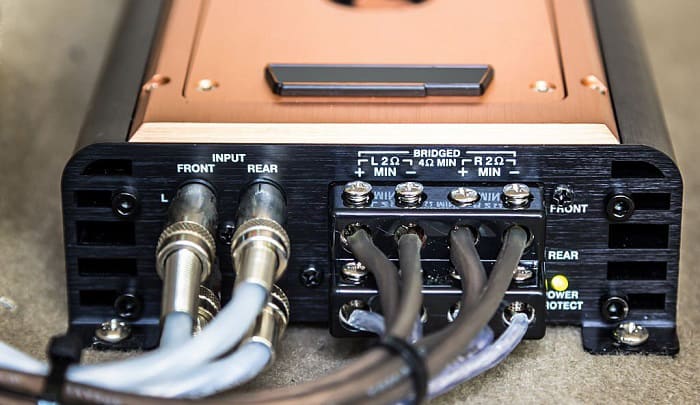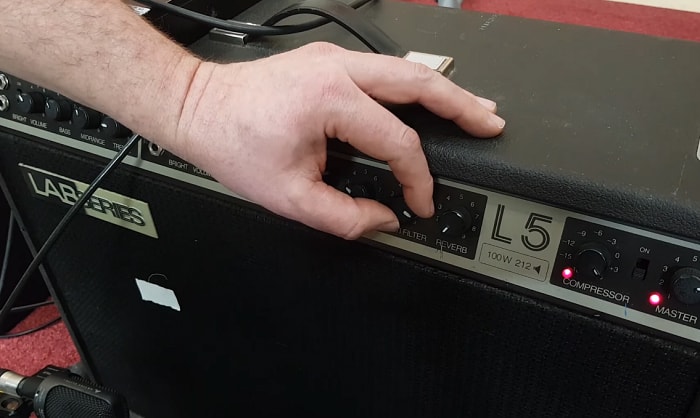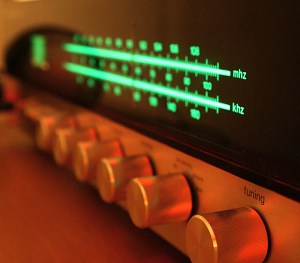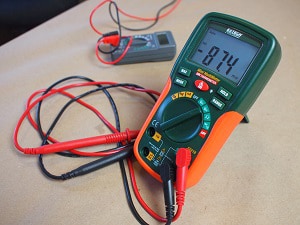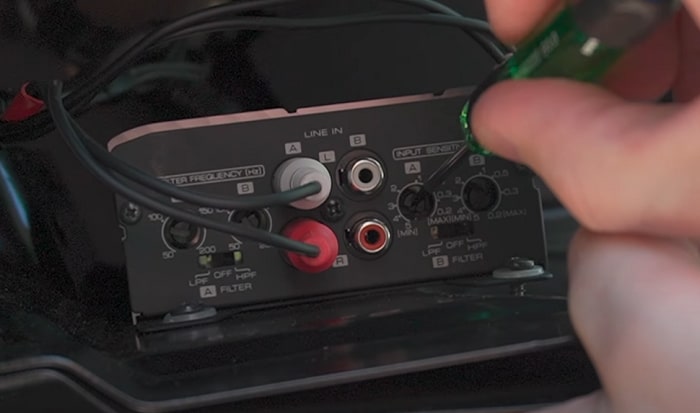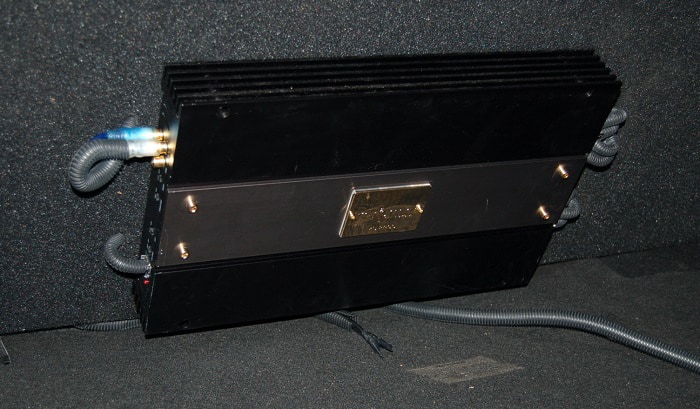Monoblock amplifiers are known to have powerful outputs. These types amplify single channels or ‘mono’ that are two or even three times more powerful than stereo outputs of multi-channel amps.
Knowing how to tune a monoblock amp and connect it to a sub will surely amplify your car audio quality.
Subwoofers usually have their own powerful amplifiers that can supply higher wattages. To produce more bass, more movement should be made. Therefore, more power is required. Monoblock amps are perfect for driving these power-demanding speakers.
Among the many monoblock amps in the market, one that shines is those from Skar Audio – known for its great value and consistent performance.
If you want to learn how to tune skar 1200 amp, or any other monoblock amp, and install a monoblock amplifier in your car, this guide will make it easy for you.
Table of Contents
Step-by-Step to Tune a Monoblock Amp
There are two methods in monoblock amp tuning: either manually or with a multimeter.
Method 1: Tuning Manually
Step 1: Set the volume knob to max volume
Turn up the volume knob until reaching the maximum volume without hearing distorted noises. This will be the max tuning level.
Step 2: Adjust the gain knob
- Turn the gain knob all the way down.
- Play any music you usually listen to and set it to the max tuning level you identified in step 1.
- You may need some help here: ask someone to carefully turn up the gain on the amplifier while you’re in your listening position/seat.
- Set amp gain by ear. You would want to listen very carefully until the bass sounds and feels good. It should begin to fill from the bottom up, as the bass gradually mixes with the sound.
- Stop when it feels it has already filled up the spaces between the mids and highs.
Bonus Step: Tuning amplifier with tweeters and mid speakers
If tweeters and mid speakers are also amplified aside from the subwoofers, the process would be slightly different. Here are a few things to remember as you tune a car amp for mids and highs:
- Do the same process like how you manually set up monoblock amplifiers earlier; but this time, tune the mids and highs components first.
- Adjust an amplifier’s gain until the tweeter and mid speakers produce crisp and loud outputs without distortions.
- Repeat the manual tuning steps now for the bass amplifier, and you’re all set.
Method 2: Tuning with a Multimeter
What to prepare:
- Digital multimeter
- Compatible monoblock amplifier, speakers, and subwoofers
- Calculator OR amplifier gain setting chart
- 60 Hz test tone CD (optional)
Step 1: Measure speaker impedance using multimeter
- Turn off speaker
- Familiarize yourself with the amp’s layout. Find the + and – terminals
- Connect the multimeter to the appropriate terminal: black to negative; red to positive
- Record the shown impedance value
Step 2: Compare speaker’s impedance with amplifier’s wattage
These 2 values are crucial to be able to tune a subwoofer amp. Check your amplifier’s user manual for the recommended wattage output.
Then, compare the amp’s power with the speaker’s impedance. The amplifier should be able to deliver wattage equal to twice the speaker’s rating.
For example, a 4 ohms, 200 watts speaker can be matched with at least an amplifier that can produce 400 watts in a 4-ohm load.
Step 3: Calculate for AC voltage
Calculate for the output voltage needed to set the amplifier’s gain. Use the formula voltage = √( watts X ohms ). Take note of the value as this will be useful later.
If you don’t want to do the math, you can look at an amp gain setting chart and find the correct voltage value using the watts and ohms values identified earlier.
Step 4: Unplug accessories
Disconnect all speakers, subs, and other peripherals. You may also opt to unplug the positive terminals only.
Step 5: Turn equalizer and gain to zero
You may set the equalizer to 0 dB or turn it off completely. As for the gain, turn the dial counterclockwise to set it to zero. With these 2 done, only the power source remains connected.
Step 6: Adjust max volume and use CD test tone
The next step to tune amplifier is setting it to around 80% of maximum volume. Afterwhich, you can now carefully turn up the amplifier’s gain knob.
Turn this knob until the multimeter reading matches the output voltage you calculated in step 3.
You may play a 60 Hz test tone CD during this step if it can help you, but this is not necessary.
Step 7: Reconnect and test if functional
Plug all accessories and double check if all are in place before turning it on. Test for functionality.
How to Install a Monoblock Amplifier in Your Car
Step 1: Disconnect battery’s negative terminal
Unplug from the power source before anything else.
Step 2: Mount the amplifier
Finding the most ideal place to mount your amplifier is vital. One common place is under the seat of either the driver or the passenger next to him.
Not only would the amplifier be hidden, but it is a great location to accommodate all wirings and connections for speakers, subs, and other peripherals. Talk about good cable management.
Ventilation is also an important factor to consider. Again, professionals agree that an under-the-seat amplifier is the most ideal. Another option is in the trunk of the vehicle.
Step 3: Connect all cables and wires
Speaking of cable management, here are all the cables and wires you need to connect:
- Ground cable – wire a lead to a metal bolt on the vehicle’s chassis and fasten the ground cable here. You may drill your own screw if no bolt is available.
It is important for the ground terminal to be in contact with the car’s metal all the time. For best results, remove any material that may affect connection.
- Power cable – connect this to the battery’s positive terminal using a ring terminal. The other side of the power cable goes to the fuse holder.
Now, the other side of the fuse holder will be connected to the amplifier’s positive terminal. Run all these wires under the carpet of your car floor.
- Remote turn on wire and RCA cables – Before this, you should mount the fuse holder near the battery for accessibility.
Run the cables of the remote turn on wire and RCA from the power wire and connect to the amplifier. This will serve as the receiver’s audio source
Step 4: Connect to subwoofer and enjoy
Connect the subwoof wire to the amplifier and test for functionality.
As you tune a monoblock amp, subsonic filters may be encountered. This is a component of the subwoofer that helps in reducing note intensity and further filtering the sound output.
Once powered on, enjoy and ‘feel’ that powerful bass in your car set up.
FAQs
What is speaker impedance?
Speaker impedance can be thought of as the ‘opposition’ or ‘load’ a speaker provides to the AC current the amplifier supplies. And similar to resistance, it is measured in Ohms (Ω).
It is crucial that the speaker impedance matches the amplifier impedance, that is, an 8 ohm speaker load should be paired to an 8 ohm rated amplifier only.
If speaker impedance is too low, distortion and weak output can occur. If it’s too high, on the other hand, the amplifier will not be able to drive the speaker.
What frequency should my amp set to?
The following are frequency ranges that are commonly used in most situations:\
- 70-80 Hz for subwoofers
- 50-60 Hz for the vehicle’s main speakers
- 3-3.5 kHz for 2-way speakers
- 1-3.5 kHz for midrange
- 300 Hz and 3.5 kHz for a 3-way system
It is still best to adjust it to your preference. Do this by listening until you hear the best sound quality without distortions or unevenness. A good ear is what’s needed.
Should I set my subwoofer phase to 0 or 180?
Phase is left at 0 most of the time. But aside from the speaker and amplifier settings, it ultimately depends which phase gives you a better listening experience.
One way to check this is to play music with a familiar bass. From your usual listening position or seat, determine if the bass becomes louder, smoother, and overall better when switching to 180.
Set the subwoofer phase to whichever setting with improved sound quality. If no difference was noticed, no issues are present and setting it to either phase would be fine.
Conclusion
Either of the two methods can be the best way to tune an amp. It heavily depends whether you can identify distortions by ear or you have available tuning tools, especially a multimeter.
Whichever method you prefer, knowing how to tune a monoblock amp will give you the power you need to not just hear, but feel, a great sounding bass that will rock your car audio setup for the better.

Sam Stephenson is a writer who grew up in Washington, North Carolina. He was 2010 and 2015 ASCAP Deems Taylor / Virgil Thomson Prize winner and a 2019-2020 Guggenheim Fellow in General Nonfiction. His books have been published by W.W. Norton, Alfred A. Knopf, and Farrar, Straus and Giroux
